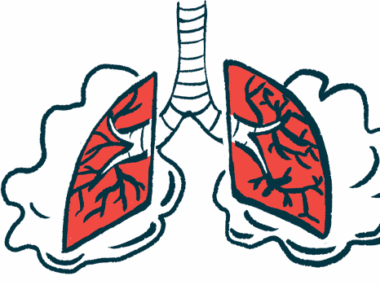Coordination lacking in transition from SMA pediatric to adult care
In interview-based study, patients cite poor communication, no clear plan
Written by |

In a new interview-based study, adults with spinal muscular atrophy (SMA) reported a lack of care coordination during their transition from pediatric to adult care settings — along with poor communication, no clear transition plans, and a need to self-advocate.
Despite these challenges, nearly three-quarters of patients still reported being satisfied — somewhat or very — with their adult SMA healthcare, the research showed.
Still, “the patient experiences captured in this study demonstrate the lack of transition plans and support for SMA patients when graduating to adult care,” the researchers wrote, noting that 30% of adult patients were either “dissatisfied or very dissatisfied” with their care in the prior year.
The team noted that “almost all participants expressed frustration with the existing model of pediatric to adult care transition, the adult care model at large, and the effort required to manage their own care.”
Overall, according to the researchers, the study findings demonstrate that “multidisciplinary SMA pediatric to adult transition programs are necessary.”
The study, titled “Understanding the experiences of adults with spinal muscular atrophy & their transition to an adult program: A mixed methods study,” was published in the Journal of Neuromuscular Diseases. by a research team from Canada.
With advances in disease-modifying therapies (DMTs), a greater proportion of SMA patients are living into adolescence and adulthood. As such, many children with SMA will eventually transition from a pediatric to an adult care setting.
With new treatments, more SMA patients now transition to adult care
Ideally, according to the researchers, this transition should address patients’ medical, psychological, social, and educational needs. Instead, many young adults with complex medical issues can experience problems during the transition, including poor adherence to healthcare and treatments, worsening disease severity, and hospitalizations.
To learn more, a team from the University of Toronto used a survey and follow-up interviews to explore the experiences of adults with SMA who had already transitioned from pediatric to adult care.
The researchers recruited 20 SMA patients, evenly split between sexes, and with a mean age of 40.5. A total of 75% were diagnosed with SMA type 2, which typically manifests in infancy, while the remaining 25% had SMA type 3, where symptoms usually begin in childhood. Of the SMA type 2 patients, three (15%) were receiving DMTs.
Three-quarters of the participants transitioned to adult care at age 18, with three (15%) transitioning at 21. Two (10%) didn’t fully transition due to a lack of specialist care in the community, the researchers found.
Altogether, most patients transitioned at least 20 years before this study took place, the team noted. In taking part, the patients completed the Family Experiences with Care Coordination (FECC) survey, which assessed care coordination services, messaging, and care plans.
Based on FECC findings, about one-third of participants (35%) had a care coordinator, while a quarter (25%) reported no access to one. None of the non-English speaking participants had access to a medical interpreter. Regarding messaging, no participants received appropriate written summaries, and one (5%) received a hospitalization summary. Likewise, no one had a shared care plan or an emergency plan, and one (5%) had a written transition plan.
Among the 70% who were satisfied with their care in the past year, half had a care coordinator. None of the dissatisfied patients had one.
Based on the data, the team wrote that “these unmet care needs of adult patients with SMA highlight the need for comprehensive integrated care pathways.”
Coordination of care ended for patients upon becoming adults
When interviewed, the participants described three main themes: a disjointed transition from pediatric to adult care, shared experiences with the healthcare system as adults, and suggestions for improving care for adults with SMA.
The patients described their transitions as disjointed and emotionally distressing, leading to feelings of isolation, confusion, and stress. A lack of case management left them feeling vulnerable, with little to no planning, information, and certainty about next steps, the results showed. These individuals also faced challenges in finding adult care providers knowledgeable about SMA.
“They never gave me any names or suggested specialists I could see. I had to figure that out on my own,” one participant reported. Another patient noted that “the community wasn’t really equipped to handle this disease since they didn’t know much about it. And once I aged out of Hospital X’s care, they didn’t give us any direction on where to go next.”
The moment you turn 18, you’re discharged from everything you’ve relied on, including home support from nurses and personal support workers. … Those services were part of a pediatric program, and suddenly, I was no longer eligible.
Pediatric care was viewed as supportive and comprehensive, but coordinated services abruptly ended upon entering adult care — with poorer communication and coordination, according to the participants. Multiple patients also reported experiencing a care gap from age 18 until their late 20s or early 30s.
“The moment you turn 18, you’re discharged from everything you’ve relied on, including home support from nurses and personal support workers,” a patient said. “Those services were part of a pediatric program, and suddenly, I was no longer eligible.”
These adults with SMA faced multiple barriers to quality care, including transportation difficulties, long travel distances, and limited access to DMTs in their regions — prompting some to consider relocating for treatment.
“We spend hours waiting for Wheel-Trans, traveling on it, and attending appointments. The same routine happens on the way back, turning the whole process into a four-hour block of time,” one patient noted.
Researchers call for a ‘holistic approach’ for adults with SMA
Despite these obstacles, the participants valued knowledgeable providers, multidisciplinary clinics, and home care funding. However, the lack of care coordination and daily living challenges required constant self-advocacy, which participants described as mentally exhausting and burdensome.
“I’m constantly advocating, constantly fighting for everything,” one patient reported. Another echoed that, adding, “There’s so much to coordinate.”
Accessibility and infrastructure issues made difficulties with daily living worse, according to the participants. Common problems included malfunctioning automatic doors and inaccessible public transportation and medical exam rooms. These barriers contrasted with pediatric facilities, which were described as fully accommodating to the needs of individuals with disabilities.
The participants emphasized the need for coordinated, patient-centered, multidisciplinary care. These patients also found managing separate providers frustrating and wanted better communication and accountability among care teams.
“It felt like my responsibility to communicate with all my doctors individually. I would love to have a single point of contact who could manage my care team — someone I could turn to when healthcare issues arise and who would respond promptly,” a patient said.
Participants also sought access to resources such as employment, housing, education, and clinical trials, as well as to adult community spaces similar to pediatric SMA clinic days.
“Community support and spaces where adults with SMA can connect and share experiences should be a top priority,” a participant reported.
The researchers noted that this was one of the first “mixed-methods studies” to particularly “focus on the pediatric to adult healthcare transition.” According to the team, it highlights many gaps, and demonstrates that “transitioning from pediatric to adult care was daunting for many participants.”
In their conclusion, the team wrote that “the progressive nature of SMA and complex medical and social needs requires a holistic approach to clinical care including a formal transition program and multidisciplinary care extending into adulthood.”









